by Howard Gardner and colleagues
James Heckman, Nobel Prize winning economist, has just published a 435 page collection called The Myth of Achievement Tests. On the surface it is a well-documented critique of the GED (General Educational Development) examination. But as one leafs through the volume, it turns out to be a 400+ page hymn-of-praise to character education. Heckman and his three co-editors see the development of character as at least as important as IQ/SAT measures, if not more so.
As a psychologist who has worked for decades in the area of human development and education, I was stunned by a striking omission in the book. Nowhere in the book does one find a substantive discussion of the areas of moral development, character development, moral and character education—areas initially investigated by Jean Piaget and Lawrence Kohlberg, and studied in more recent times by many outstanding scholars , such as James Arthur, Marvin Berkowitz, Anne Colby, William Damon, Carol Gilligan, Helen Haste, Thomas Lickona, Elliot Turiel, Richard Weissbourd, just to name a few known to me personally. (Angela Duckworth, a younger researcher, is mentioned; I note that she has been a collaborator of Heckman’s)
I wrote to several of my colleagues in psychology, and one economist, to see if they had an explanation for what struck me as an inexplicable lacuna. Here, slightly edited, anonymous, and in italics, are their responses:
The world view of economists
Economists live on a quite different planet in another universe called The Rational Way (rather than the Milky Way) but just occasionally, as they get older, or become grandparents, they ‘discover’ humanity, virtue, etc. But as their planet doesn’t have suitable libraries, they usually ‘remember’ their childhood experiences with teachers, nuns, parents, pop TV, etc. and the kinds of films that John Wayne starred in. Maybe a small dash of dilute Aristotle, filtered through pre-adolescent Christian or Jewish religious classes, or maybe Scouts….
Disciplinary silos
Economists aren’t the only ones to stick to their own disciplines — or even sub disciplines (e.g. Social psychologists).
The self-satisfaction of celebrity scholars
People who have been highly celebrated often think they can solve a problem without paying attention to what others have tried to do about it. Zillions of successful businessmen and celebrities do this in education all the time. I mentioned an outstanding program of character development to a well known social entrepreneur when he was starting a similar program, and he showed absolutely no interest in the earlier work.
Remember the dreadful William Shockley, a Nobel prize winner in electronic engineering, who set himself up as an ‘expert’ in race and IQ? And who, when he was challenged on this (and other social) issues, fished his Nobel Prize out of his pocket and said, ‘ When you have one of these, you can criticize me.’
Problems with the field itself
Moral and character education in particular is a field divided into an infinity of approaches, many of which actually are antagonistic to one another, so people often don’t even want to know what others are doing because they assume it’s probably worthless.
Different methods
I went to a conference where economists had simply replicated work done in psychology forty years ago. When one of the conference hosts pointed that out, the economists showed no interest. In fairness to them, they no doubt would reject the methods I used, and the feeling is mutual, which is kind of the point.
A different focus
Heckman is primarily focused on performance character, not moral character. And I’m very concerned in general not only by the fact that much recent work on character is ignored but by the degree to which moral character in particular is evaporating in conversation about teaching and raising kids. Grit and other performance characteristics are, of course, the rage right now, and too often I have conversations with educators where “character” has been equated with just performance character. Even empathy is often discussed only instrumentally, as a way of increasing one’s own achievement and well-being.
It would be interesting to know how students and teachers interpret the KIPP motto to ‘be nice.’ My guess is that Bernie Madoff was very nice, that is how he charmed people. I doubt that anyone would say President Lyndon Johnson was ‘nice,’ but he accomplished a great deal against the odds.
I was just a discussant on moral “performance” and civic character strengths. One reason I think that rather arbitrary classification is useful is that it reminds people that the instrumental ones aren’t the only ones that are important and that positive outcomes in advancing the individual aren’t the only reasons character strengths are important.
To hell with them
My reaction in these cases is the same advice Virgil gave Dante as they were walking in one of the bottom circles of Hell, where the damned were doing some gruesome things to each other that attracted Dante’s attention: “Non ti curar di lor,” Virgil tells him, “ma guarda e passa.” In other words, Do not bother with them, just look and keep walking . . .
And from an economist of my acquaintance:
I too find it unsettling that the new wave of researchers on “character” seems blissfully and maybe willfully ignorant of their predecessors in these interests. There is a certain amount of brand creation going on here. And a certain amount of “scientism” as well. In Heckman’s’s case, that may be less the concern than that he shares the familiar economist’s vice that if an economist didn’t say it, it was never really said. Fortunately there are exceptions to that rule!
Closing comment:
I think that this range of responses covers the likely possibilities for this striking omission. I might add that the phrases ‘moral’ and ‘character education’ have sometimes had a moralistic or religious connotation and that had scared off parts of the scholarly community. Of course, if readers can think of other possible explanations, I hope that they will respond to this blog.
As a scholar, I have lingering questions:
1) How can a book by a major scholar, with a major press, go to press without anyone noticing, and in some fashion addressing, this glaring hole? What’s the responsibility of reviewers and editors to correct omissions?
2) In this era of powerful search engines, what can we as scholars do to minimize our ignorance of significant work on a topic of interest in related fields? What should we do? What mechanisms ought to be created to blow up the silos manifest throughout the Heckman volume…. And no doubt in many other volumes coming from scholars in many other fields?






